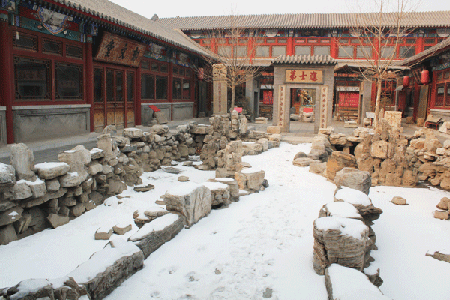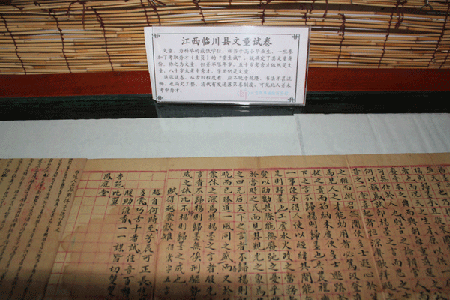The long road to scholarly honor
|
 |
|
The backyard of the museum is designed in the traditional Chinese style. [Photo:CRIENGLISH.com] |
The history of the examination system from its advent in Sui Dynasty (580-618 A.D.) to its demise in the late Qing Dynasty (1644-1911 A.D.) is demonstrated through a display of wood carvings, photos and documents; the main exhibition hall also dedicates a special glass case to documents reflecting on the international influence of China's Imperial Examination System. Among them is a quote from an article titled "China: A New Departure" in the September 1888 issue of The Westminster Review: "The Imperial Examination System of Chinese polity deserves termless laudability."
The exhibition halls that surrounded the back courtyard explain the four phases scholars had to go through before being granted the chance to enter the imperial examination. The students had to pass various exams during the four stages, which were roughly equal to today's middle school level, high school level, preparatory period for college level and college level.
 |
|
The museum has a collection of authentic exam papers. [Photo:CRIENGLISH.com] |
The imperial examination was held every three years. According to legend, one student tried 20 times to pass the exam, meaning he spent 60 years--his whole adult life-- preparing and taking the exams.
Scholars who pass top-level exams experience a significant change in status. Local officials would likely present a special banner for the scholar's family to hang at the entrance to their homes. The scholar's success would then be remembered for generations to come.
Yao, the museum owner, believes the old examination system still affects people's mentalities today, and is clearly manifested in society's high regard for the college entrance examinations.
|
 |
|
Those who have passed the imperial examination have their name listed on the Zhuangyuan Scroll and shown to the public. [Photo:CRIENGLISH.com] |
Some of Yao's collection is quite detailed and intriguing. For instance, one exhibition hall displays writing brushes, ink pads, authentic exam papers and even children's school bags. The exam answer sheets, protected by a glass plate, show off the fine calligraphy skills expected of imperial officials.
Many visitors, including foreign tourists, leave their thoughts on Yao's collection in the museum's message book. A visitor named Susan wrote: "A wonderful museum! Full of interesting and historically valuable materials" after a tour of the museum in 2009. Another visitor named Eddy showed his gratitude for the museum owner saying "More people must come to see (this museum). Thank you for the excellent effort & result!"
Realizing the educational value of the museum, Yao said he is working with universities in Beijing to make the museum a regular studying base for students who major in history.
Logistics Address: 1366 Folk Culture Street, Gaobeidian 高碑店民俗文化街1366號(hào)
Subway: Batong Line, Gaobeidia Station
Museum hours: 9 a.m.-4 p.m. (closed on Mondays)
Tickets: 40 yuan per/person, 25 yuan for students






















